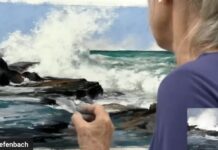The following landscape painting demonstration is part of a series featuring a leader in the art community who will be joining us on the faculty of the Plein Air Convention & Expo, taking place May 21-25, 2023 in Denver, Colorado.
This year, you get the chance to meet our special celebrity guest, Jane Seymour! Jane Seymour is a true Renaissance woman. Not only is she a talented actress, but she is also a champion for the power of art. This is a rare opportunity to see one of the most accomplished and celebrated film artists of our time live at PACE, and we would love for you to be a part of it! [Learn more and register here!]
Boosting Color to Add Energy to a Dull Scene:
A Landscape Painting Demo
by Jed Dorsey
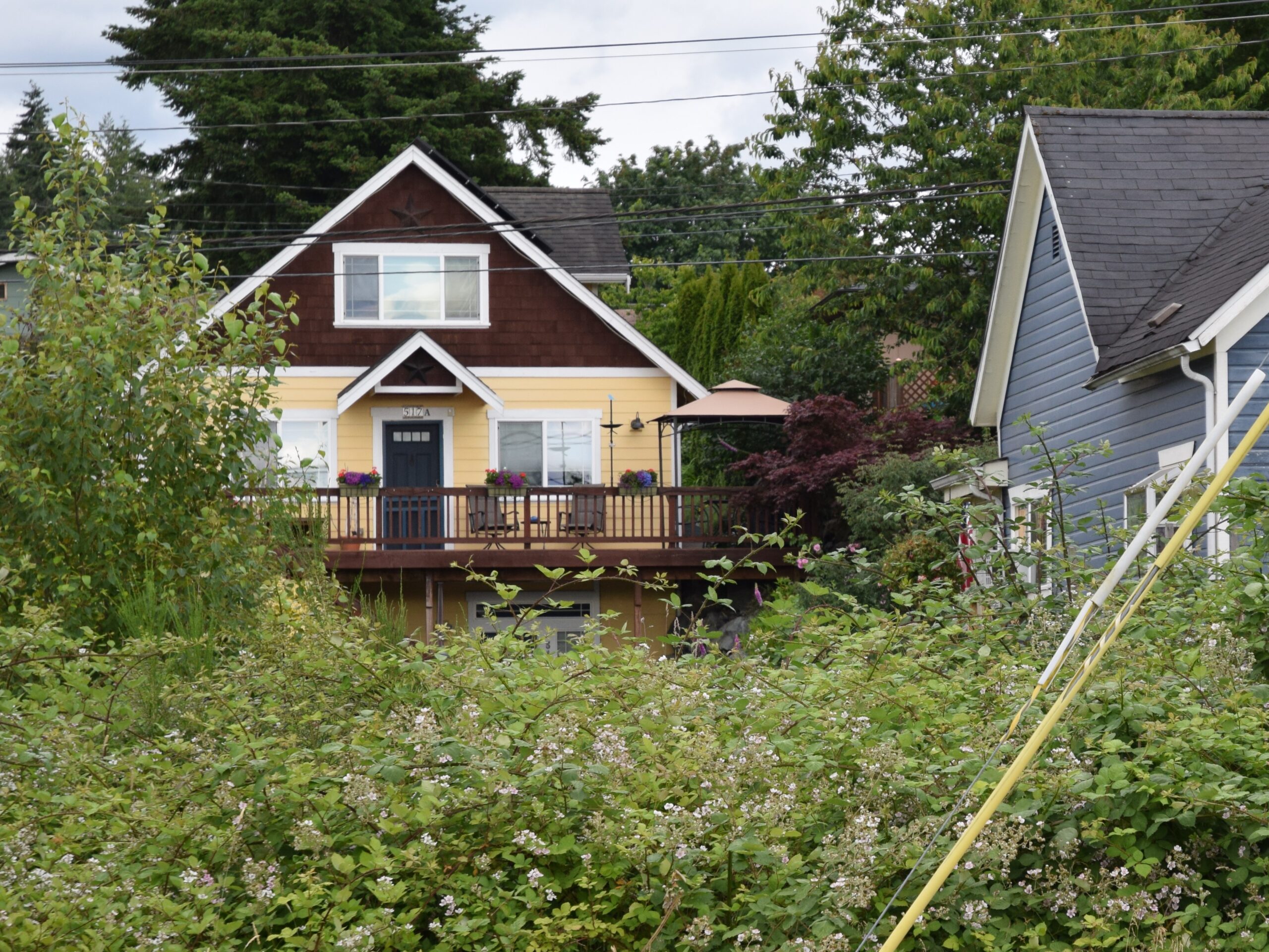
Step 1 of the Landscape Painting Demonstration
I almost always start a painting with a quick thumbnail sketch. This helps me think through the design and establish the parameters of the scene. When I’m faced with an overwhelming amount of visual information outside, it’s helpful to reduce my subject to a bite-size sketch that I can use as a guide. A thumbnail also helps me to plan out the values. Often I do multiple sketches and choose the best design to paint.
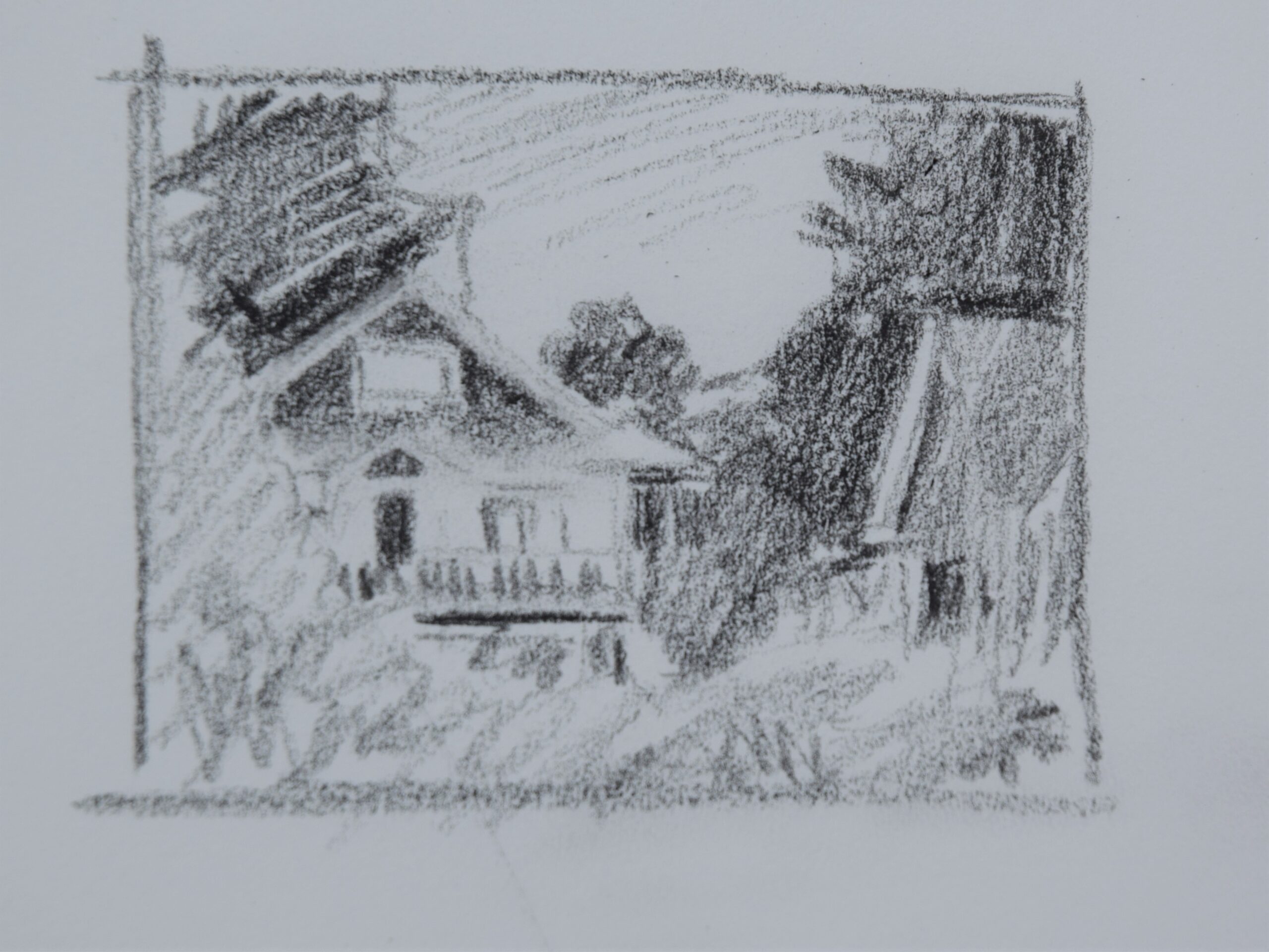
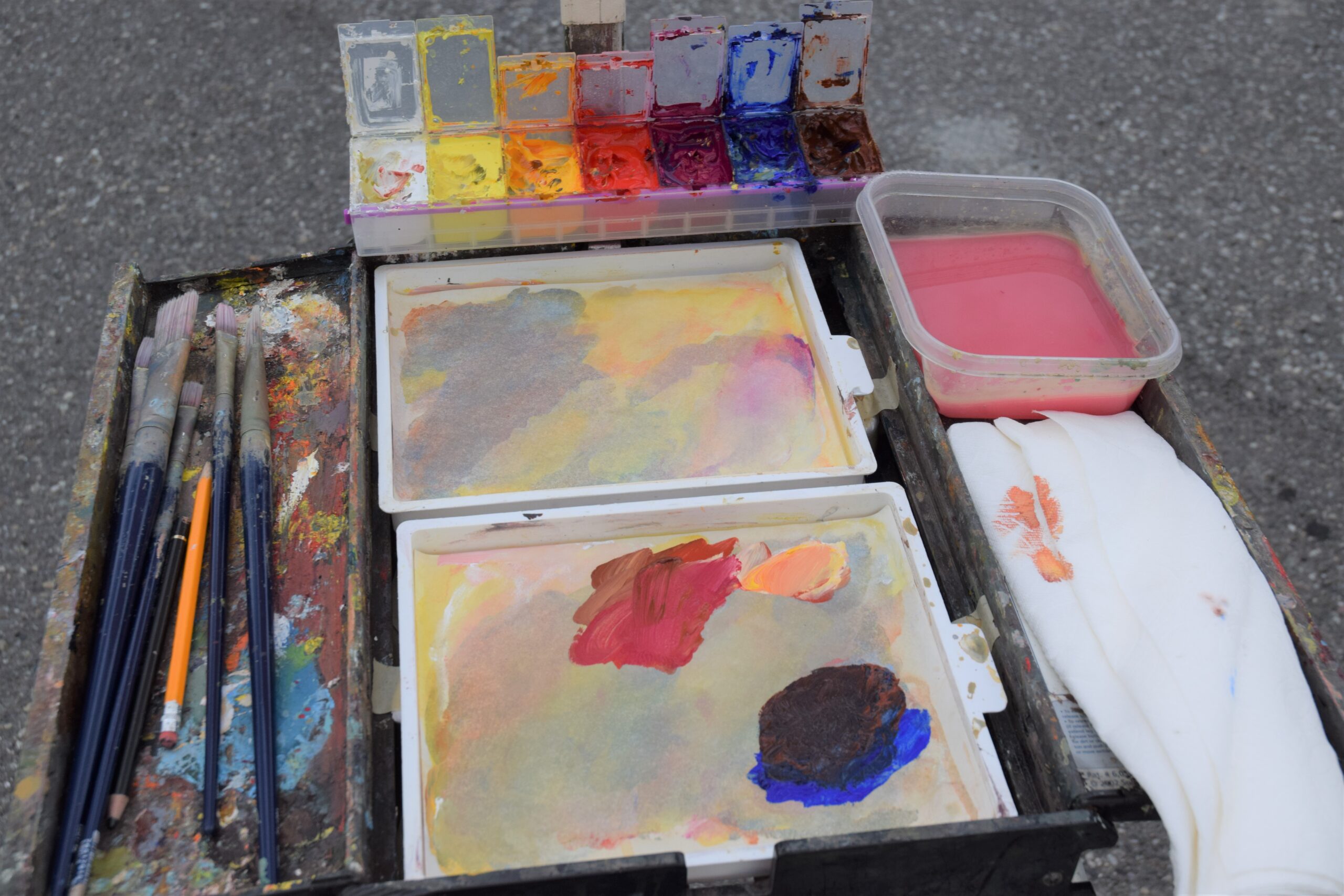
Step 2
Since the day was mostly cloudy and gray, I thought a warm, colorful surface would bring life to the scene. I chose a canvas panel that I’d pre-painted with a thin layer of Golden Fluid Acrylics’ quinacridone gold. I then painted in the design with burnt sienna and cadmium red. Unless it’s a really detailed or architecturally important scene, I usually paint the design directly, bypassing a pencil sketch — this saves time, and I know I can correct small things later if my design is imperfect.
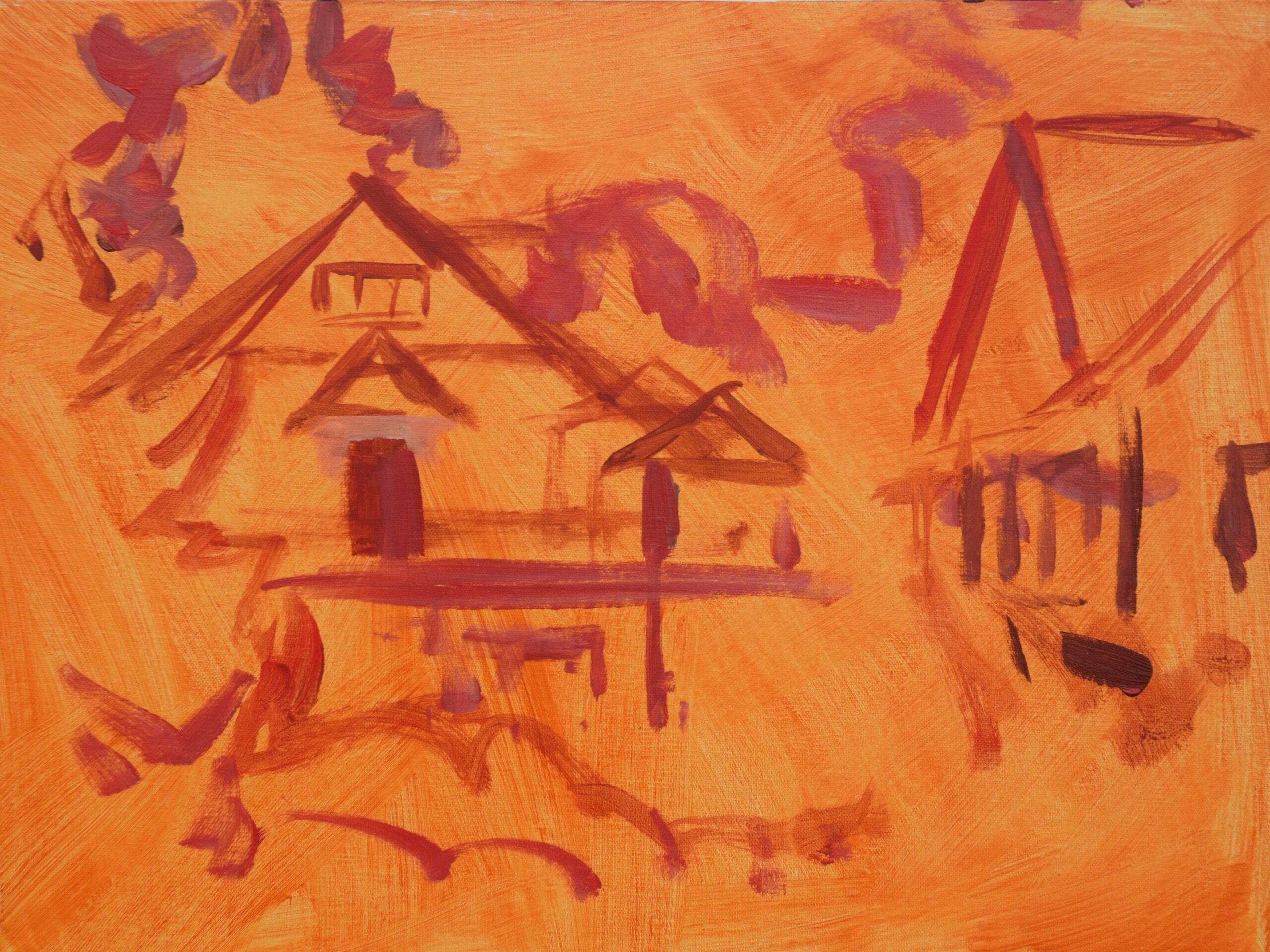
Step 3
Next, I placed the darks. Most paintings I love have a full range of values — from very dark to very light — so I try to get the darks in early to establish that end of the value spectrum, and because they look best in the finished painting when they are more transparent and thinner, creating a base for the other values.
This is part of why painting thin-to-thick is a good habit, even if you work in a medium like acrylics, where having the paint dry properly isn’t an issue like it is with oils.
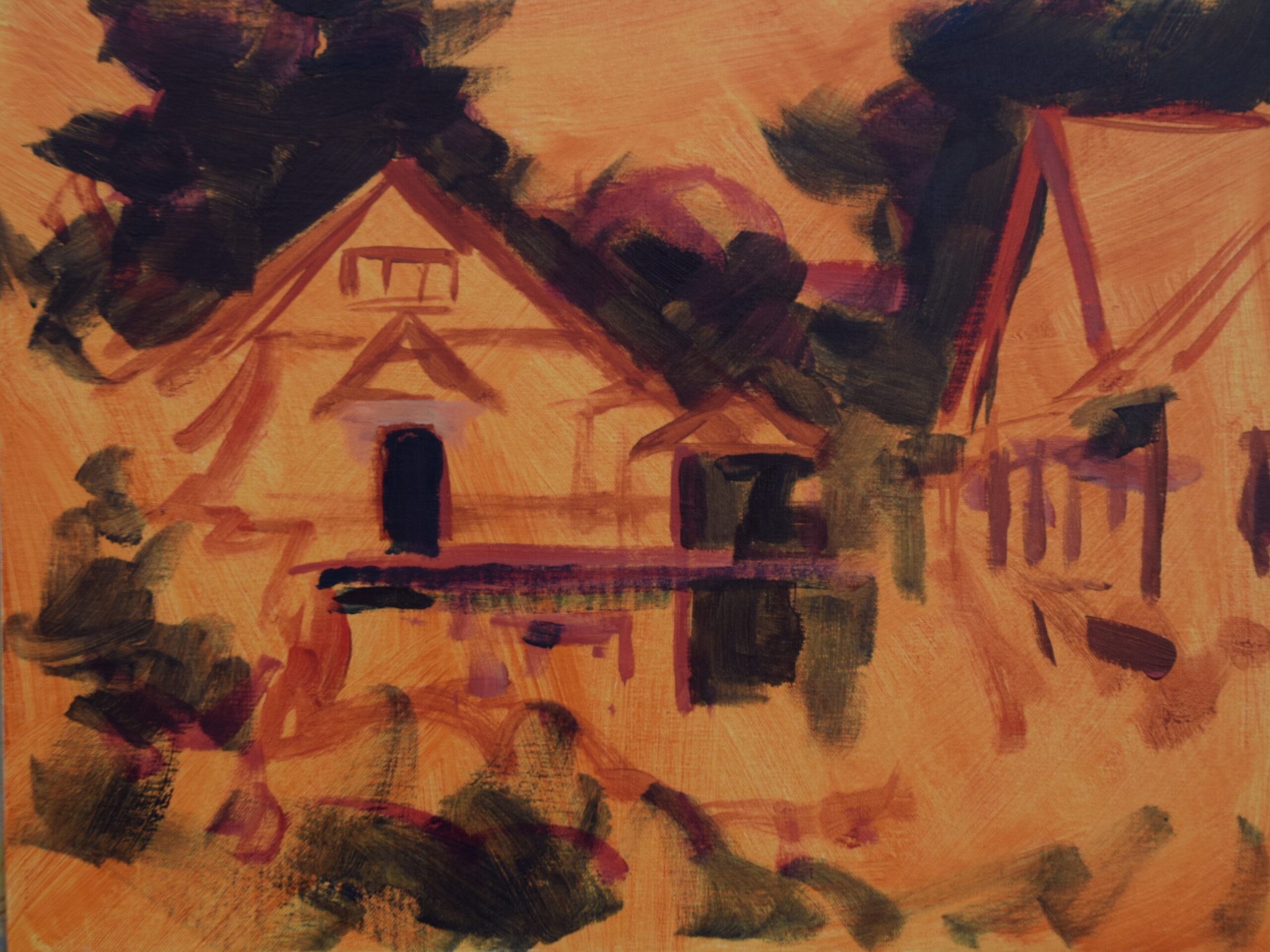
Step 4
The next thing I do is block in the basic colors and values, staying fairly true to what I actually see. I might push those elements a little at this point, but mainly I’m just trying to get the gist of the scene down.
While covering most of the canvas, I allow some of the underpainting to show through. Because of that, the scene still carries a largely warm feeling, even though it’s a predominantly gray afternoon.
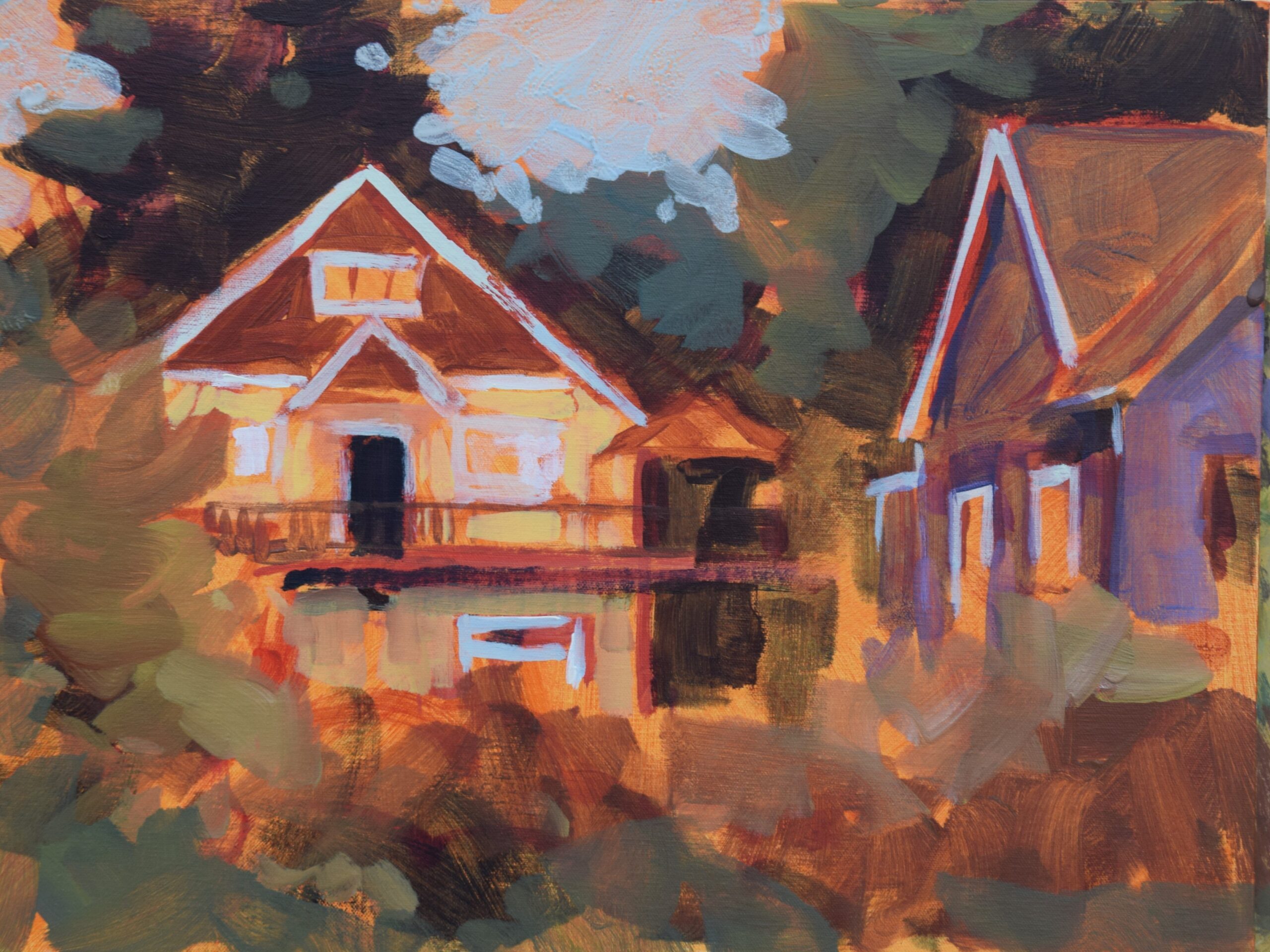
Step 5
At this point, I’ve started exaggerating a few colors I’ve observed in the scene. There is a reddish tree that I’ve made much brighter. I also noticed violet in the cloudy sky and accentuated that. I’ve made the blue house cooler and lighter in value. I’m also refining and adjusting; working on bringing form, nuance, and texture; and intermixing colors all over the canvas to bring harmony to the painting.
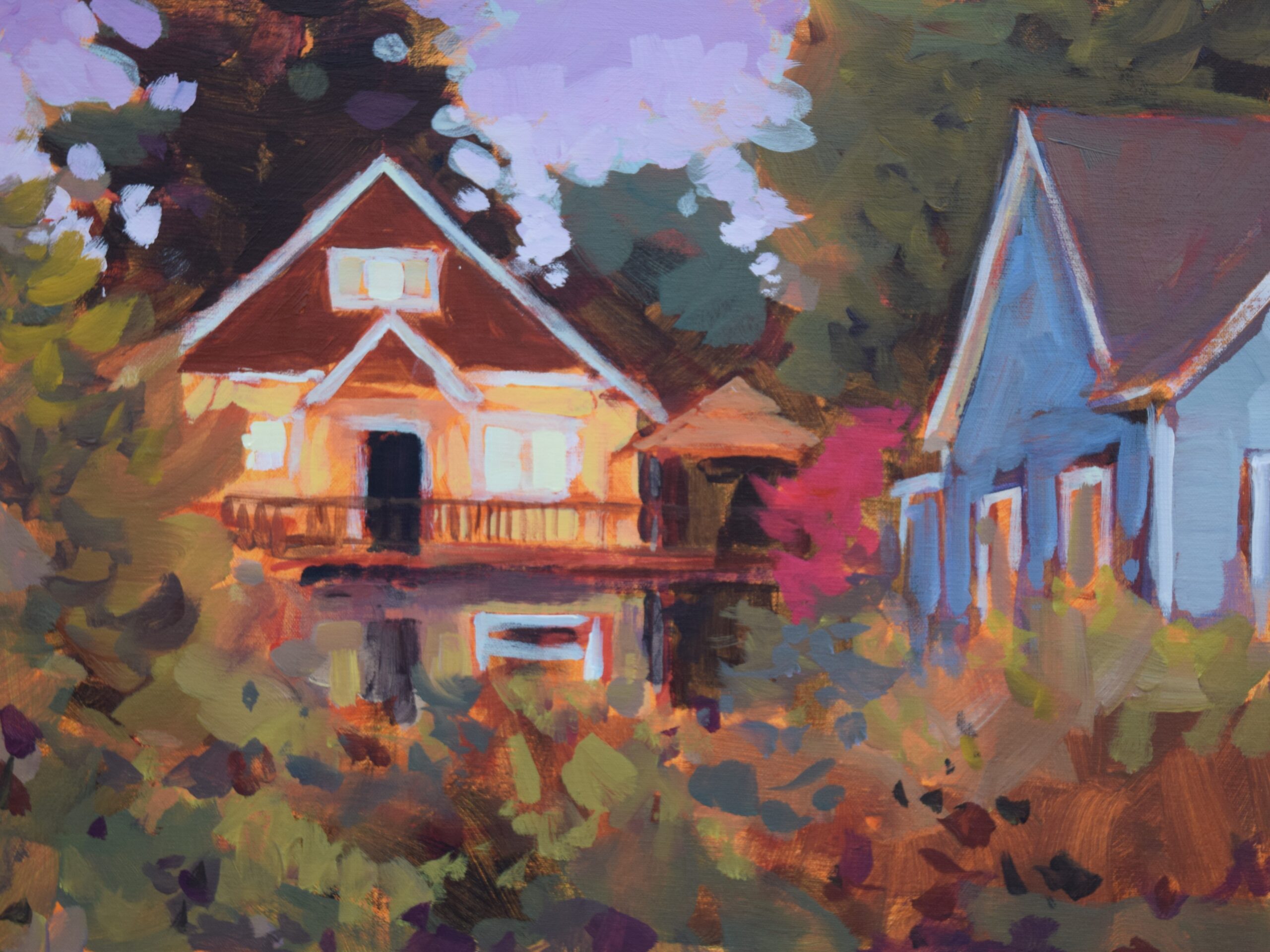
Final Step of the Landscape Painting
To finish the piece, I brought as much life to the colors as I could. The sun was going down behind me, but it never actually broke out from behind the clouds like I was hoping it would. Still, there was a glow from the sky that reflected off the windows, the faces of the houses, the grasses, trees, and everything else. I just took what was there and kicked it up a notch.
By the very end, the daylight was fading so I made the final touches in my studio from memory. I often find that whether painting outside or in, there comes a point in the painting where I need to concentrate on the question “What will make this painting as good as it can be?” Sometimes this means that I stop looking at the scene altogether so I can be freed up from reality.
That’s why we’re artists, isn’t it? We use our imagination and creativity; we aren’t simply reproducing a scene like a photograph. And it takes some courage to experiment. Sometimes we get it right, and sometimes we fall short. But the process is where we grow and thrive.
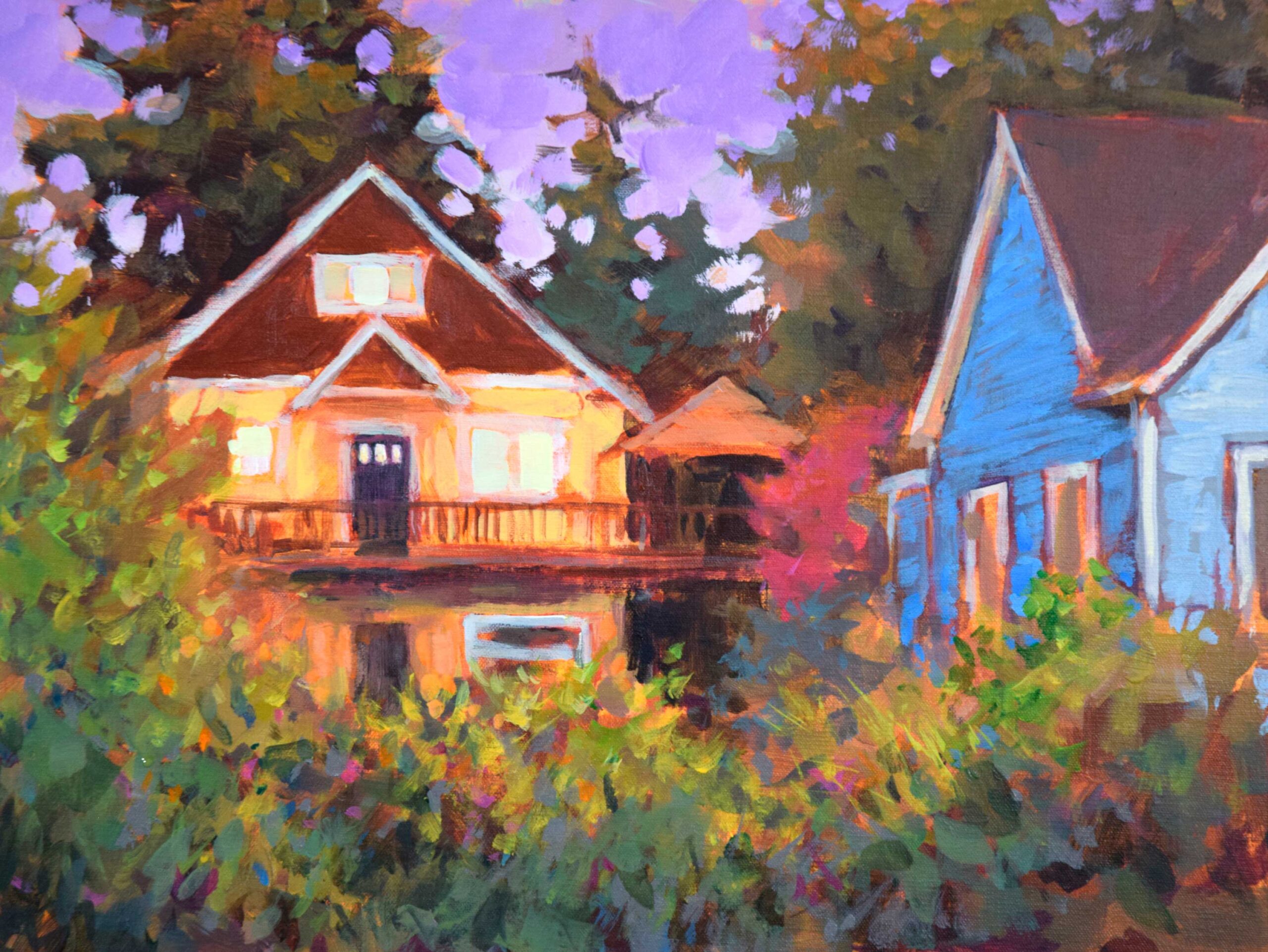
Connect with Jed Dorsey at jeddorseyart.com.
And browse more free articles here at OutdoorPainter.com

